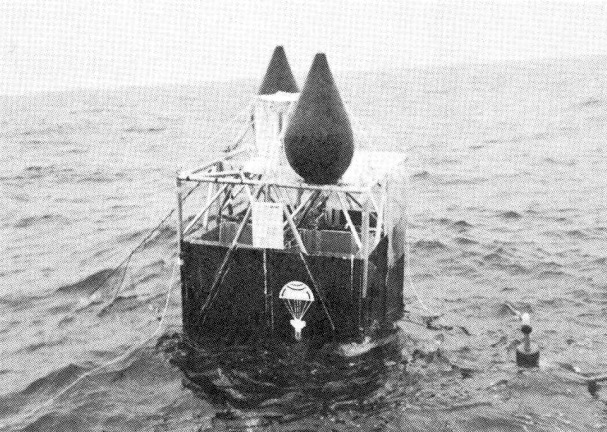Purpose of the flight and payload description
In the framework of the development of better technologies related to rocket recovery technology a balloon-borne mission was carried out by ISAS to investigate the parachute opening characteristics, especially the low opening load coefficient.
The gondola used in this experiment transported several test items that were dropped one after another from the balloon in flight, to observe the parachute opening, and the parachute behaviour during the slow descent to the sea. The telemetry of the experiment was received at the Sanriku Balloon Center, while an on-board 8 mm camera taped the process for post-flight analysis.
In the image at right we can see the gondola floating in the ocean after the test.
Details of the balloon flight
Balloon launched on: 5/26/1982
Launch site: Sanriku Balloon Center, Iwate, Japan
Balloon launched by: Institute of Space and Astronautical Science (ISAS)
Balloon manufacturer/size/composition: Zero Pressure Balloon model B15 15.000 m3
Flight identification number: B15-53
End of flight (L for landing time, W for last contact, otherwise termination time): 5/26/1982
External references
- ISAS News Nº 16 July 1982 (in Japanese)
- Scientific observations with balloons Institute of Space and Astronautical Science Annual Handbook 1982 (In Japanese)
16041If you consider this website interesting or useful, you can help me to keep it up and running with a small donation to cover the operational costs. Just the equivalent of the price of a cup of coffee helps a lot.


